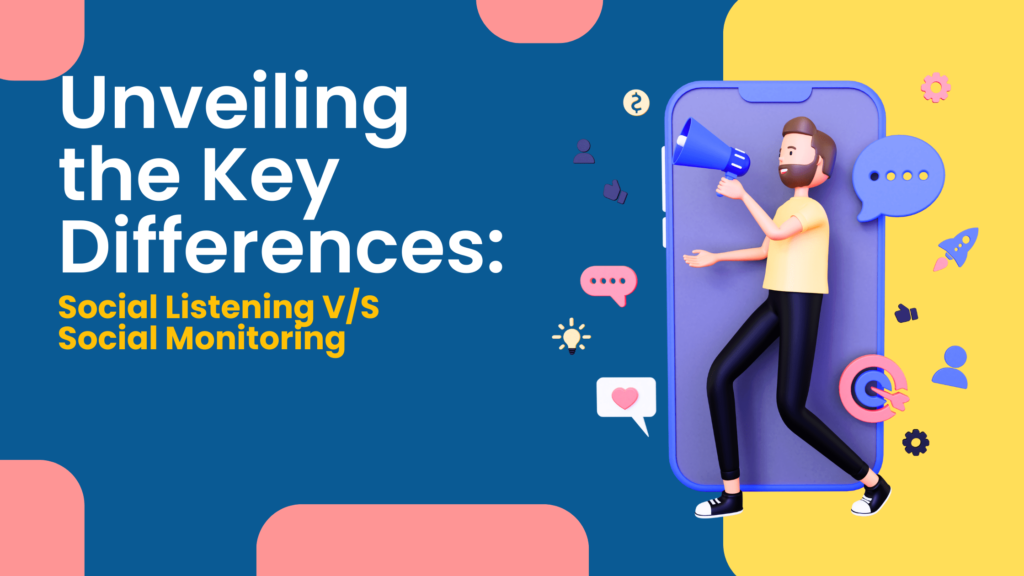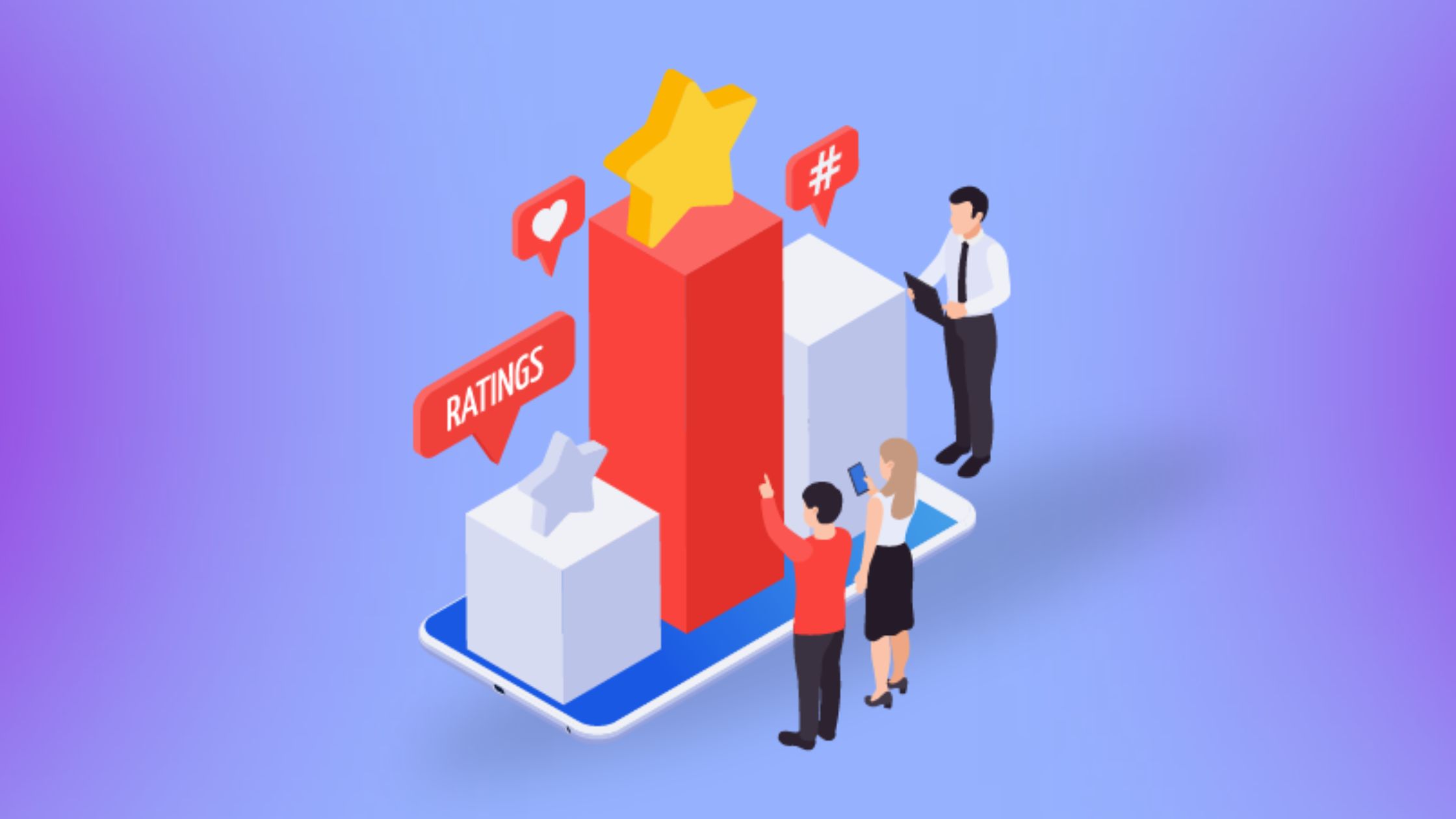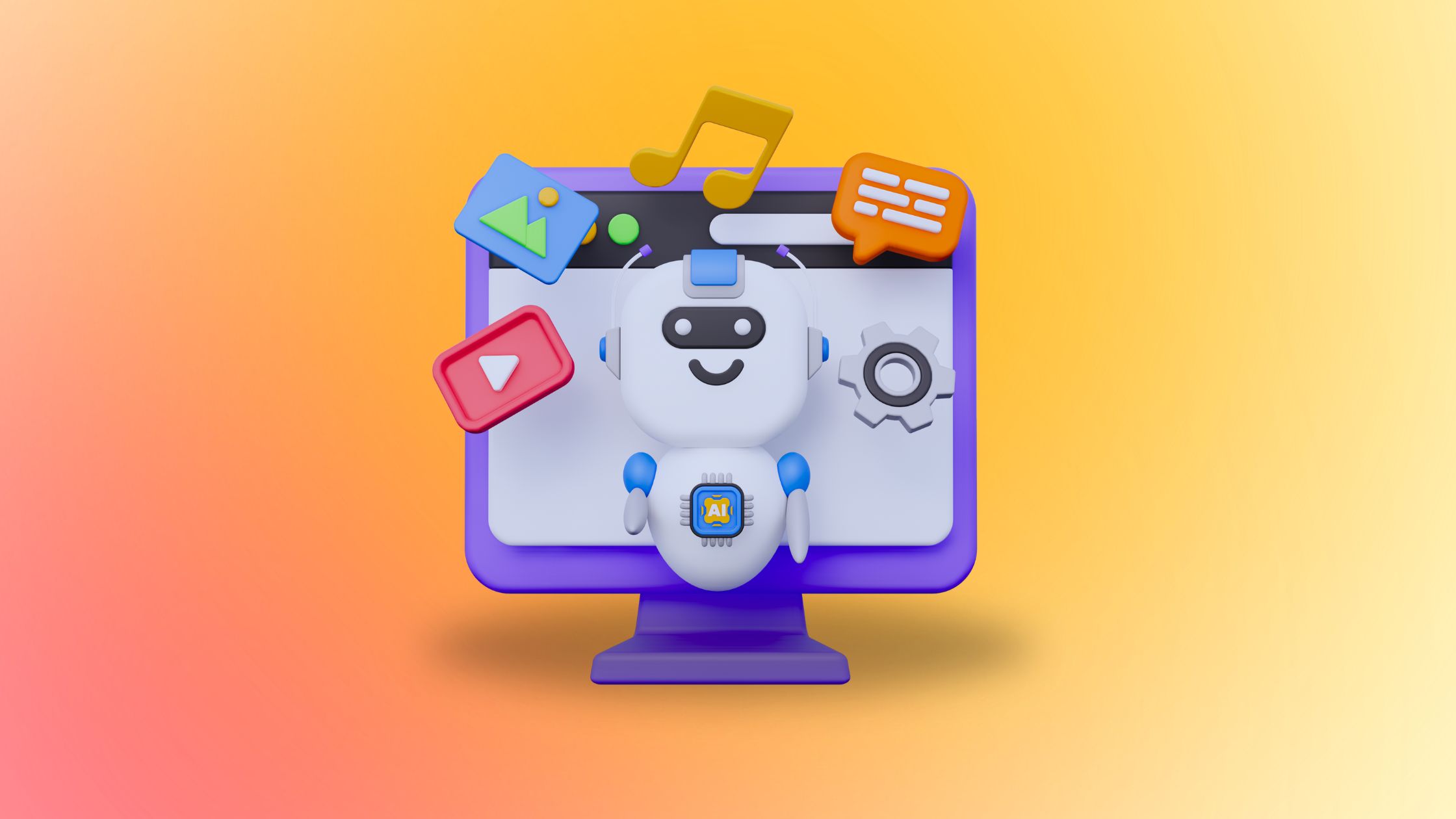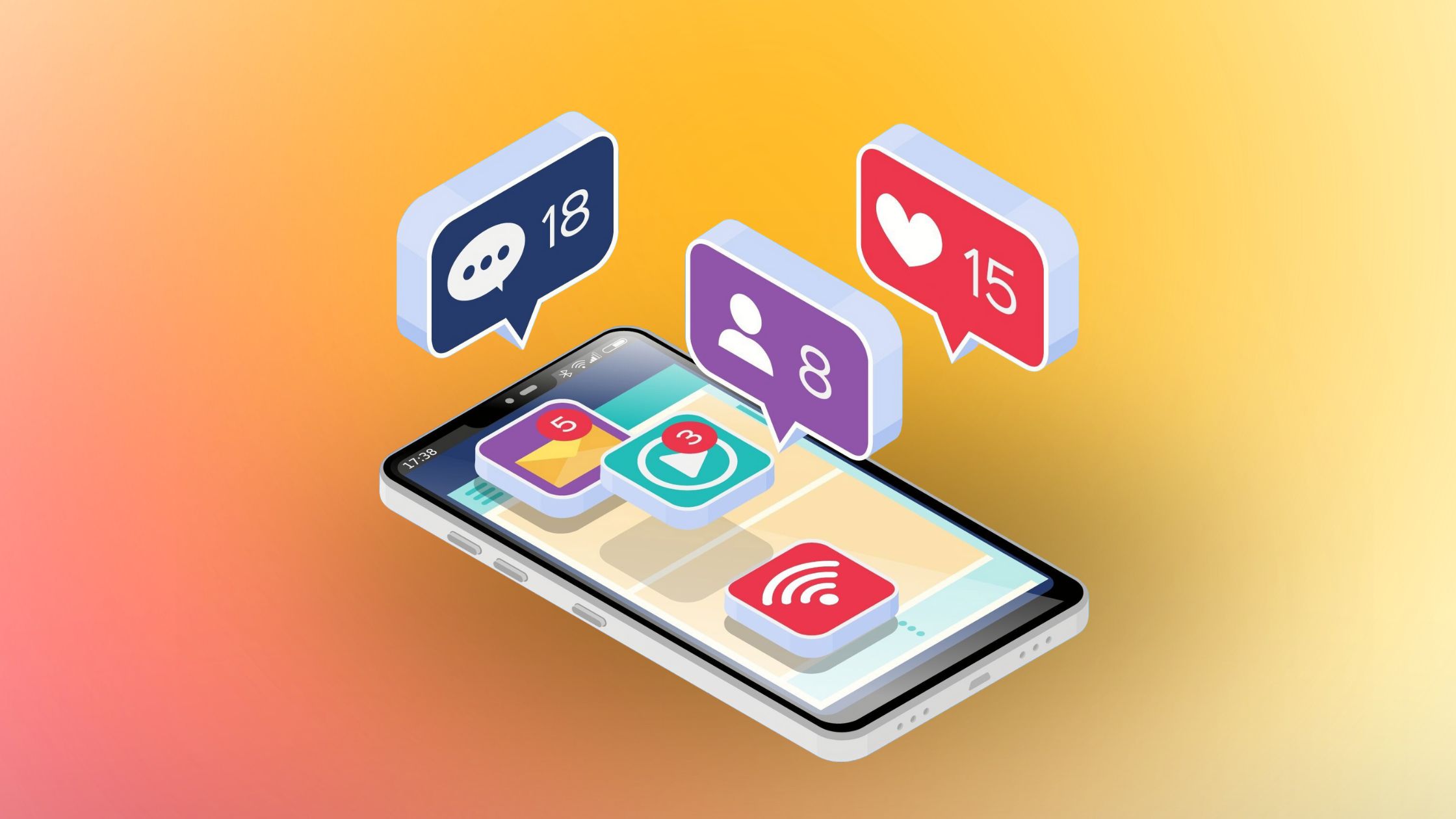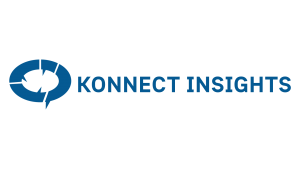Social media marketing is a vast space and therefore, you can expect some terminologies to be used interchangeably. However, just because they are used interchangeably does not mean that they are always similar. Take social listening and social monitoring for example.
Most people working in the digital space think they are different words for the same process. Some marketers know they are different but get confused while spotting their differences. Yet, only a few experts can explain the clear difference between them.
This articles sets out to clear the definitions, goals, and benefits of social media listening and social media monitoring. In the end, you will be able to understand the prominent differences between social media listening v/s social media monitoring.
What is Social Media Listening?
Social listening is a social media strategy that revolves around observing online conversations and deriving meaningful insights from them. The whole purpose is to tap into the emotions and sentiments of the end users. The insights obtained from social media listening are typically used to improve marketing strategies and ongoing campaigns.
It involves gathering data from different social media networks and communities. Once enough data is gathered, social listening tools dissect the meaning by breaking down conversations.
Some brands prefer to listen to only what matters to their brand. So, they track only their brand mentions.
However, a wiser approach would be to track everything related to your brand. So, you also track conversations involving your competitors or anything related to your domain or industry.
This is where social listening comes into the picture. It tracks down all the interactions and tries to set a broader perspective on the market and trends.
Why Does Social Listening Matter? 5 Benefits of Social Listening
Social media listening is a comprehensive strategy that, if followed, provides an overview of the market. Tracking the marketing strategies of competitors is also a part of social listening.
To understand why social listening is important, go through the key benefits of employing a comprehensive social listening strategy:
1. To obtain key market insights
Through social listening, you not only track brand mentions but also track conversations that are related to your business. It tracks even those conversations where your brand name is not mentioned. The conversations that typically don’t need any response from your end are also analyzed to derive meaningful insights.
Some of the common questions that social media listening answers include:
- Which platforms do your customers prefer?
- How visible is your brand on social media (through brand mentions)?
- Which competitors are more visible than your brand?
- Do customers discuss issues and pain points that are related to your industry/sector?
By answering these questions, social listening provides meaningful insights about your business, market, and competitors.
2. Understand the audience better
One of the key social listening objectives is to understand the audience better. Once you understand them, engaging with them becomes a lot easier. Customers’ true expectations, requirements, and pain points can be understood through it.
Social media listening gives you insights about the most discussed topics in your industry. For instance, your business is offering corporate training to professionals and employees. In this case, the topics that interest entrepreneurs and professionals can be understood through social listening.
By resolving their issues, you can establish your thought leadership in your industry. The entrepreneurs/professionals will seek your attention, which will be the starting point of converting them into loyal customers.
All the conversations are tracked in real-time. So, you can choose the conversations that you want to participate in.
3. Discovering influencers
Social media influencers are people or groups who influence the audience using different social media platforms. Celebrities, industry experts, motivational speakers, and many other individuals/groups fall into this category.
So, finding influencers that connect and engage with your audience can be challenging. Social listening helps you discover genuine influencers for your brand. With their help, you can advocate your brand values, message, and ethics.
You can collaborate with industry experts and create meaningful content for your target audience. It increases your brand reach and also helps shape your online reputation.
4. Competitor Analysis
Competitor analysis is an integral part of the social listening strategy. Social listening tools are capable of seeing what the audiences say about your competitors. They also let you know how they react to their social media campaigns.
By observing conversations related to your competitors, these tools provide details regarding their strategies. Their shortcomings, strengths, and brand positioning can be analyzed with social listening.
Suppose that you run a cosmetics store and some consumers are complaining about the harsh chemicals used by your competitors. This gives you an opportunity to step in and fulfill the needs of consumers by providing herbal products.
With social listening, you can understand this before everybody else. So, by providing you with insights at the right time, social listening strategies give you a competitive advantage.
5. Implementing the feedback
Social monitoring can highlight the common questions that your audiences ask through different social channels. With social listening, you understand the gravity of the situation by knowing how many people are asking similar questions.
Social listening helps you identify similar issues and concerns that surround your product/services. So, instead of answering every question separately, you can incorporate the feedback and upgrade your offerings.
A social listening strategy includes the continuous inclusion of keywords and topics that are related to your business. Keeping trending topics and keywords on your radar helps you incorporate the latest trends and customer preferences in your marketing strategies.
Also Read : Why Social Listening And Customer Insights Are Important For Your Brand
Goals of Social Listening
Social media listening is not restricted to only social media channels. It also tracks conversations happening on all kinds of online platforms and resources. I would like to look at some of the key social listening objectives now:
- Improve customer service: Social listening helps you track both positive and negative reviews. By addressing the negative reviews on time, you can resolve customer issues. It creates a positive perception of your customer service among your customers.
- Find new leads: Social listening helps you to track all the products, keywords, and mentions that are relevant to your business. It also tracks online forums, communities, blogs, and social media apps where you do not have an online presence. By interacting with the customers on these platforms, you can find new leads for your business.
- Innovate promotional strategies: Social listening helps you understand the varying preferences, needs, and expectations of the customers. By providing insights into their behavior, it helps you improve customer engagement.
The finer nuances regarding their buying preferences and history let you shape your marketing strategies. You gain access to finer details like their age, gender, occupation, interests, etc. By using these insights you can create targeted marketing campaigns.
What is Social Monitoring?
Social media monitoring is the process of tracking conversations that are directly related to your brand. By providing you access to these conversations in real-time, it helps you avert a crisis.
Social monitoring comes into the picture when you want to understand what people think and perceive about your brand. It usually involves tracking brand mentions, hashtags, and local searches.
The keywords, phrases, and topics that are relevant to your brand can also be tracked using social monitoring strategies. If required, they can also track your product names and competitors.
Why Does Social Media Monitoring Matter? – 5 Benefits of Social Monitoring
One of the main social monitoring objectives is to develop stronger relationships with your audience. Addressing their concerns on priority and maintaining a clean online image are also among its key objectives. Some of the main social monitoring benefits are explained below:
1. Answering queries & complaints
Both new and existing customers can raise concerns and queries by tagging your brand name on social media. By highlighting tags and brand mentions, social monitoring helps you answer them promptly. This improves your brand reputation and allows you to build stronger relationships with the customers.
2. Finding new trends & opportunities
Social monitoring lets you track your competitors and brand name consistently. By tracking these, you can identify the emerging trends and patterns in the market. You can incorporate these insights into your marketing strategies.
Suppose you sell hair growth serums. By monitoring social media channels, you find that keratin-based serums are getting more popular day by day. If your product already contains keratin, you can highlight this in your product packaging and labels. Similarly, your daily posts, promotions, and campaigns can also bring it to the audience’s notice.
If your products do not contain keratin, you can ask your product development team to add them. Your brand can launch a new keratin-based serum to compete with others.
3. Gathering social proof
Social proof enables you to establish your brand’s online presence and reputation. By tracking brand mentions, you can find the positive things that your customers say about your brand. You can highlight their positive feedback and reviews in your daily posts.
Publishing user-generated content on websites and social apps also builds trust and confidence for your brand. Social media monitoring helps you gather such social proofs by monitoring your brand name.
4. Retain customers
After buying your products/services, the customer expects dedicated support services from you. If you do not address their issues and complaints on priority, it can damage your brand reputation.
With social monitoring, you can track customers’ issues and complaints in real-time. By resolving their issues, you can satisfy their needs. It also helps you retain them in the long run.
5. Identifying sentiments
With social media monitoring, you can directly track the conversations that matter to your brand. By analyzing these conversations, you can classify them into negative and positive conversations. This helps you identify the underlying sentiment of customers regarding your products/services, support services, and overall brand.
Goals of Social Monitoring
Some of the prominent social media monitoring objectives include:
- Bolstering online image: Creating a powerful online image is essential to run your business successfully. To emerge as a responsible and caring brand, you must address customer concerns, issues, and feedback on priority. Social monitoring lets you do that by tracking your brand name.
- Boost engagement: With social media monitoring, you can track the conversations happening everywhere in the digital space. By employing the right tools, you can identify the communication channels that generate the most leads.
- You can also find the channels that most of your customers prefer. You can optimize the content on these channels and cater to the specific needs of your target audience. It will boost your engagement rate and lead to greater digital success!
- Prevent crisis: Customers express their vivid emotions blatantly on social media. If your brand name or products get highlighted when they express their anger or frustration, it can create an irreparable dent in your online reputation.
Social media monitoring helps you track such negative reviews. After tracking them, you can either resolve them or reduce their impact on your brand. Due to this, ORM (Online Reputation Management) agencies usually rely on social monitoring tools.
Difference between Social Listening and Social Monitoring
I have explained the key differences between social monitoring v/s listening in the below table:
| Differentiating factor | Social Media Monitoring | Social Media Listening |
| Definition | Social monitoring tracks what customers are saying about your product/services, brand, competitors, and overall industry on social media. | Social listening is a process of tracking customer conversations to analyze customer sentiments, emotions, opinions, industry trends, and more. |
| Main Purpose | The main purpose of social monitoring is to discover customer feedback and reviews and respond to them in real time. | The main purpose of social listening is to get a broader view of the customers and the market. |
| Approach and Scope | Social monitoring uses a more focused approach to determine what people are saying. The process is mainly reactive i.e. actions are taken after the occurrence of events. | Social listening uses a comprehensive approach to understand the reason behind people’s sentiments. The process is mainly proactive i.e. actions are taken before the occurrence of certain events. |
| Data and Insights | The data obtained through social monitoring is more of a quantitative nature. They measure the key metrics of your social media plans such as reach, volume, etc. | The data obtained through social listening is more of a qualitative nature. They derive the insights that reveal the meaning and result of your social media strategies. |
| Scale | Social media monitoring happens at the micro-level i.e. it is only restricted to reacting to positive and negative customer reviews. | Social media listening happens at the macro level i.e. analysis is done to determine your brand positioning, competitor strategies, and other relevant discussions in the market. |
| Tools | Social monitoring can be managed without any tools. | It is not possible to manage social listening without tools. Sophisticated social listening tools are used to collect large volumes of data and interpret it. |
Should Brands Use Social Listening, Social Monitoring Or Both?
The difference between social listening and social monitoring can be understood by knowing their meaning, goals, and benefits. Once you understand that, there is no reason to prioritize one over the other.
Social listening helps you transform your business strategies according to the evolving digital landscape. Therefore, it can be a game-changer for your business. Social monitoring helps you provide better customer service by responding to conversations in real time.
So, the choice between the two depends on what you want to achieve. With social listening, you can transform your online business by consistently tracking industry trends, competitor moves, and customer insights. With social monitoring, you can prevent customer sentiments from escalating beyond a point.
Conclusion
These are some of the subtle differences between social listening and social monitoring. Social monitoring is more of an activity to monitor your brand mentions. Social listening is a comprehensive approach that goes beyond tracking brand mentions. To survive in the dynamic business environment, you need both.
Konnect Insights offers seamless access to social CRM, social listening, social analytics, and social publishing tools. It is a comprehensive customer experience management suite that helps you understand the market, competitors, and customers better. Check out the website today to know what your customers are saying and explore the reasons behind their sentiments!
